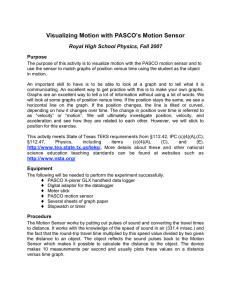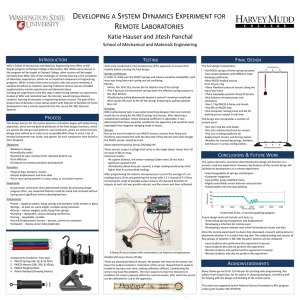Lab 10 Mass on a Spring
advertisement
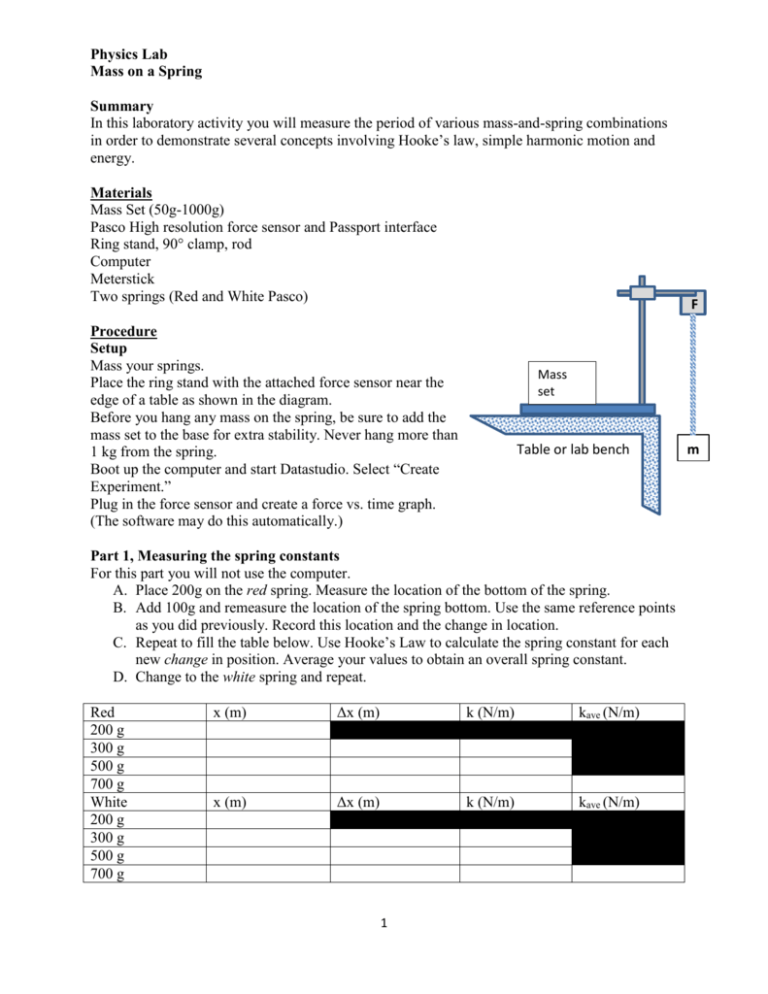
Physics Lab Mass on a Spring Summary In this laboratory activity you will measure the period of various mass-and-spring combinations in order to demonstrate several concepts involving Hooke’s law, simple harmonic motion and energy. Materials Mass Set (50g-1000g) Pasco High resolution force sensor and Passport interface Ring stand, 90° clamp, rod Computer Meterstick Two springs (Red and White Pasco) F Procedure Setup Mass your springs. Place the ring stand with the attached force sensor near the edge of a table as shown in the diagram. Before you hang any mass on the spring, be sure to add the mass set to the base for extra stability. Never hang more than 1 kg from the spring. Boot up the computer and start Datastudio. Select “Create Experiment.” Plug in the force sensor and create a force vs. time graph. (The software may do this automatically.) Mass set Table or lab bench Part 1, Measuring the spring constants For this part you will not use the computer. A. Place 200g on the red spring. Measure the location of the bottom of the spring. B. Add 100g and remeasure the location of the spring bottom. Use the same reference points as you did previously. Record this location and the change in location. C. Repeat to fill the table below. Use Hooke’s Law to calculate the spring constant for each new change in position. Average your values to obtain an overall spring constant. D. Change to the white spring and repeat. Red 200 g 300 g 500 g 700 g White 200 g 300 g 500 g 700 g x (m) Δx (m) k (N/m) kave (N/m) x (m) Δx (m) k (N/m) kave (N/m) 1 m Part 2, Period of vibration For this and the next part you will use the computer. Use the “Setup” window to be sure that the force sensor is set for a sampling rate of 100Hz. A. Place 300g (total) on the spring. Pull the mass down gently (no more than a few cm) and let it go. Be sure that it is oscillating up and down and not swaying side-to-side significantly. B. Begin recording data. Record for several cycles of the motion. C. Fit the curve using a “sine fit”. Record the period of the fit. D. Place 500g (total) on the spring. Repeat B &C. E. Change to the other spring and repeat B-D. Par 3, Energy analysis For one of your mass-spring combinations you will measure a long-time set of oscillations. Make sure you record which mass and which spring. A. Set the motion sensor sampling to 50 Hz. B. Begin a gentle oscillation. Be sure the mass is moving only up-and-down and then begin recording data. C. After at least 1 minute of oscillations stop recording. D. From your graph find a maximum force from the earliest few oscillations. You may wish to use the Smart Tool in the graph menu for this. E. From your graph find a maximum force from the last few oscillations. F. Find the overall mean (average) force for the entire data run. (Use the Σ button. If no data are selected, it should automatically average all your data, which is what you want.) G. Save a copy of this graph for your lab report. This is the only part of the lab where you need to save a graph. Discussion questions Part 1 1. Fill in the data table for part 1. Part 2 2. An ideal mass-on-a-spring should obey k / m . Do your data support this? Part 3 3. What is the meaning of the overall average for the F(t) curve? 4. What is the maximum elastic potential energy from the early part of the motion? 5. What is the maximum elastic potential energy from the last part of the motion? 6. Comment on the two energies calculated in questions 4 and 5. E. Boucher 4/2012 2


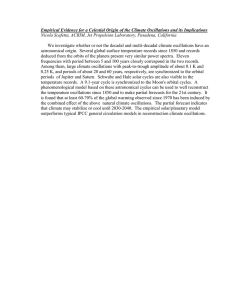
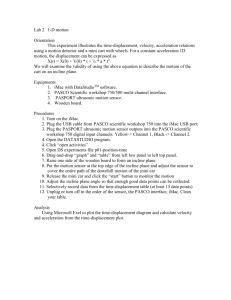



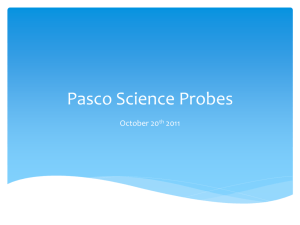
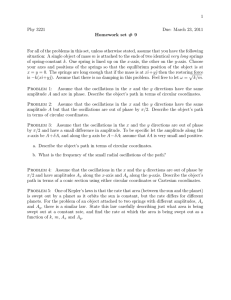
![Solar Forcing and Abrupt Climate Change over the Last 100,000... Jose A. Rial [] and Ming Yang [], University of](http://s2.studylib.net/store/data/012739005_1-c337c3e26293ae14faa36e511979b340-300x300.png)
